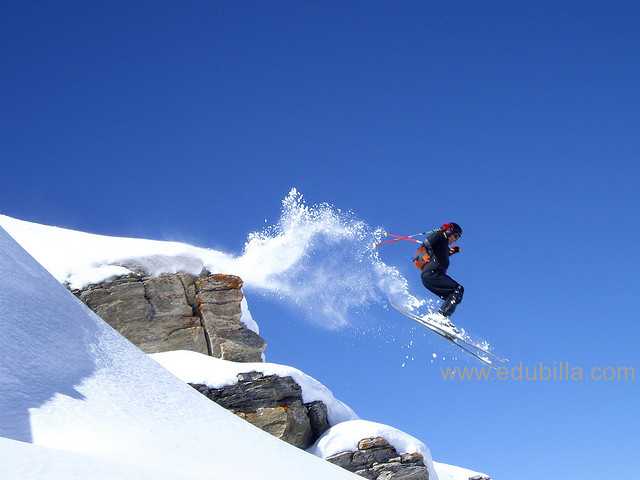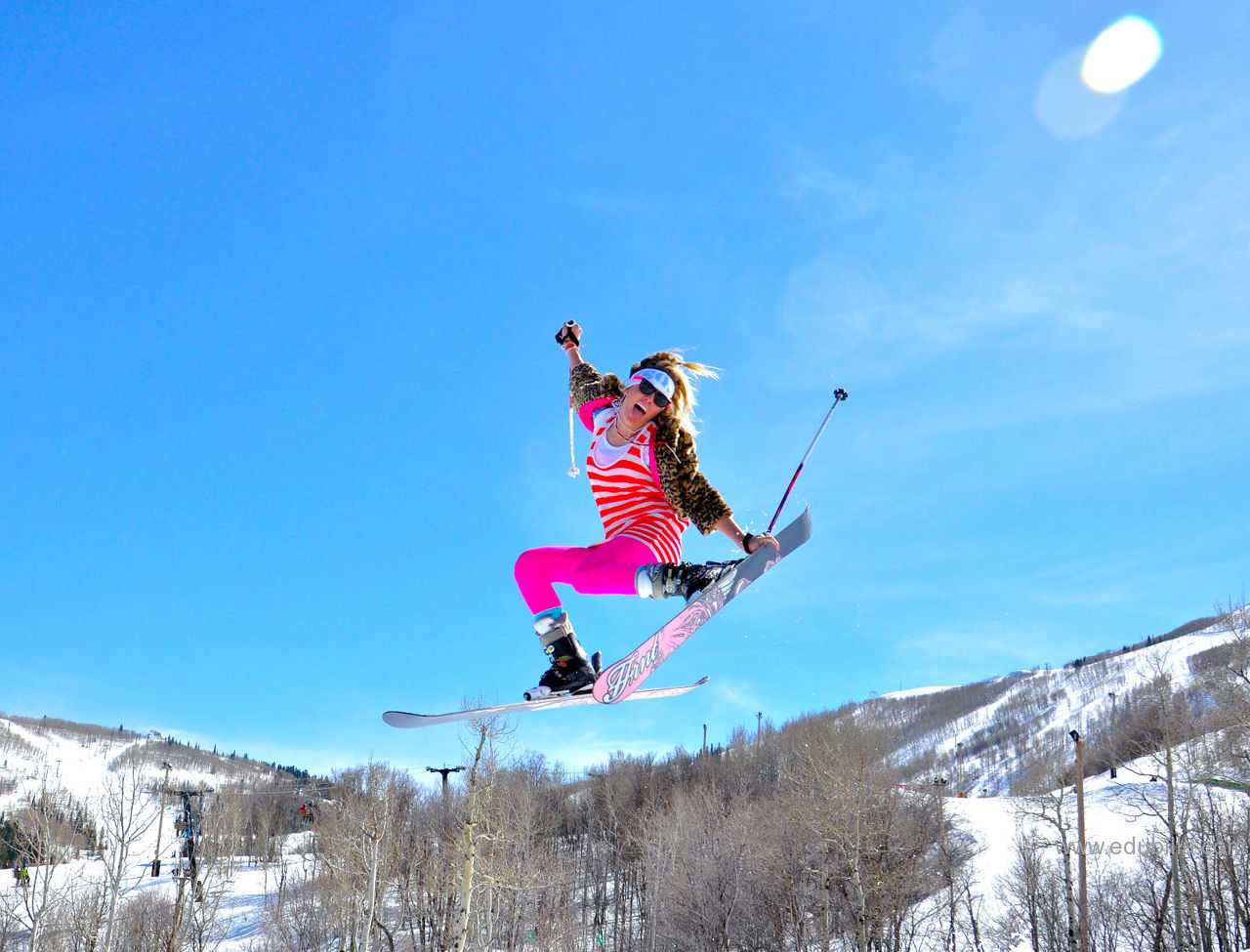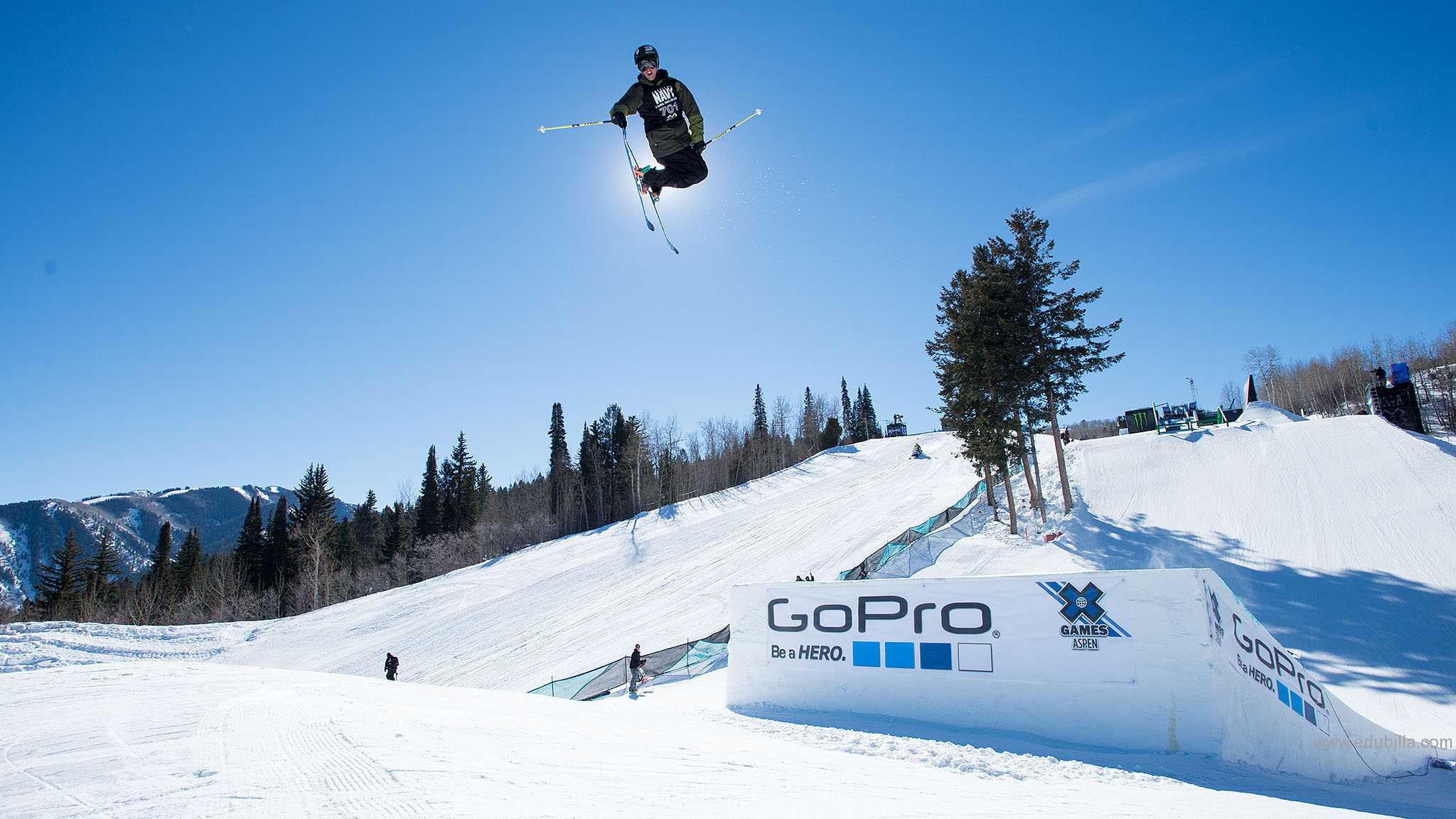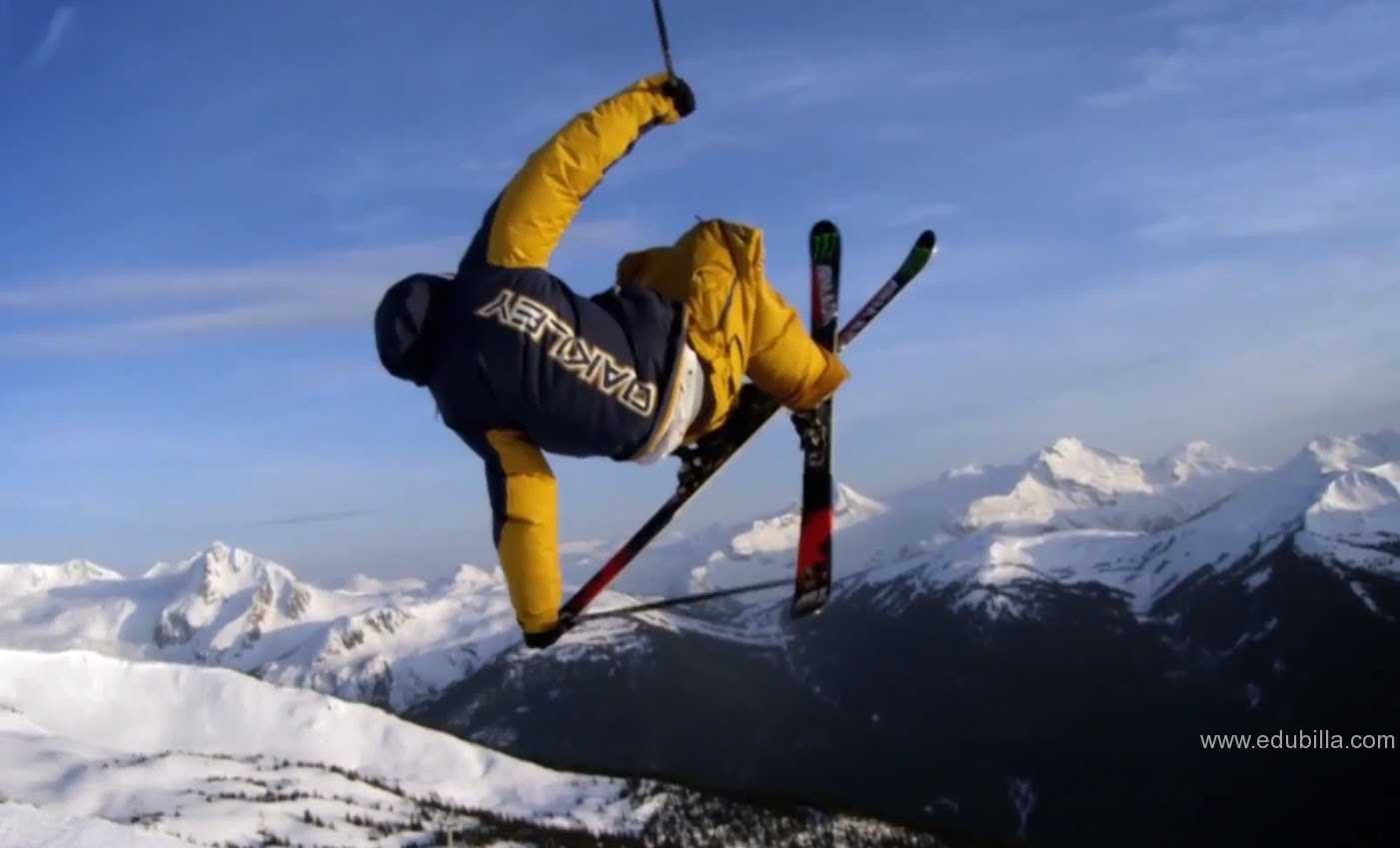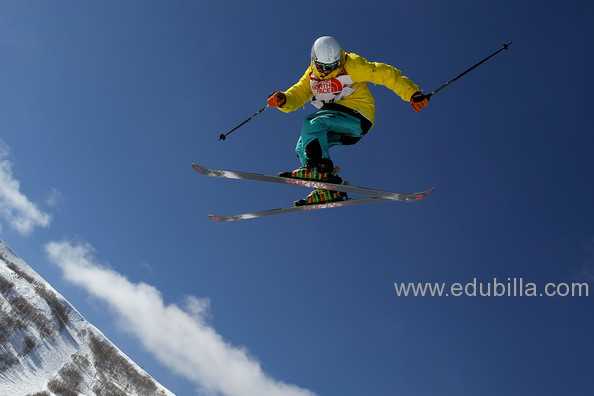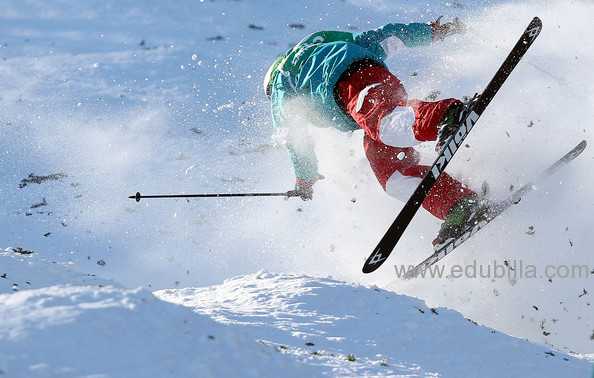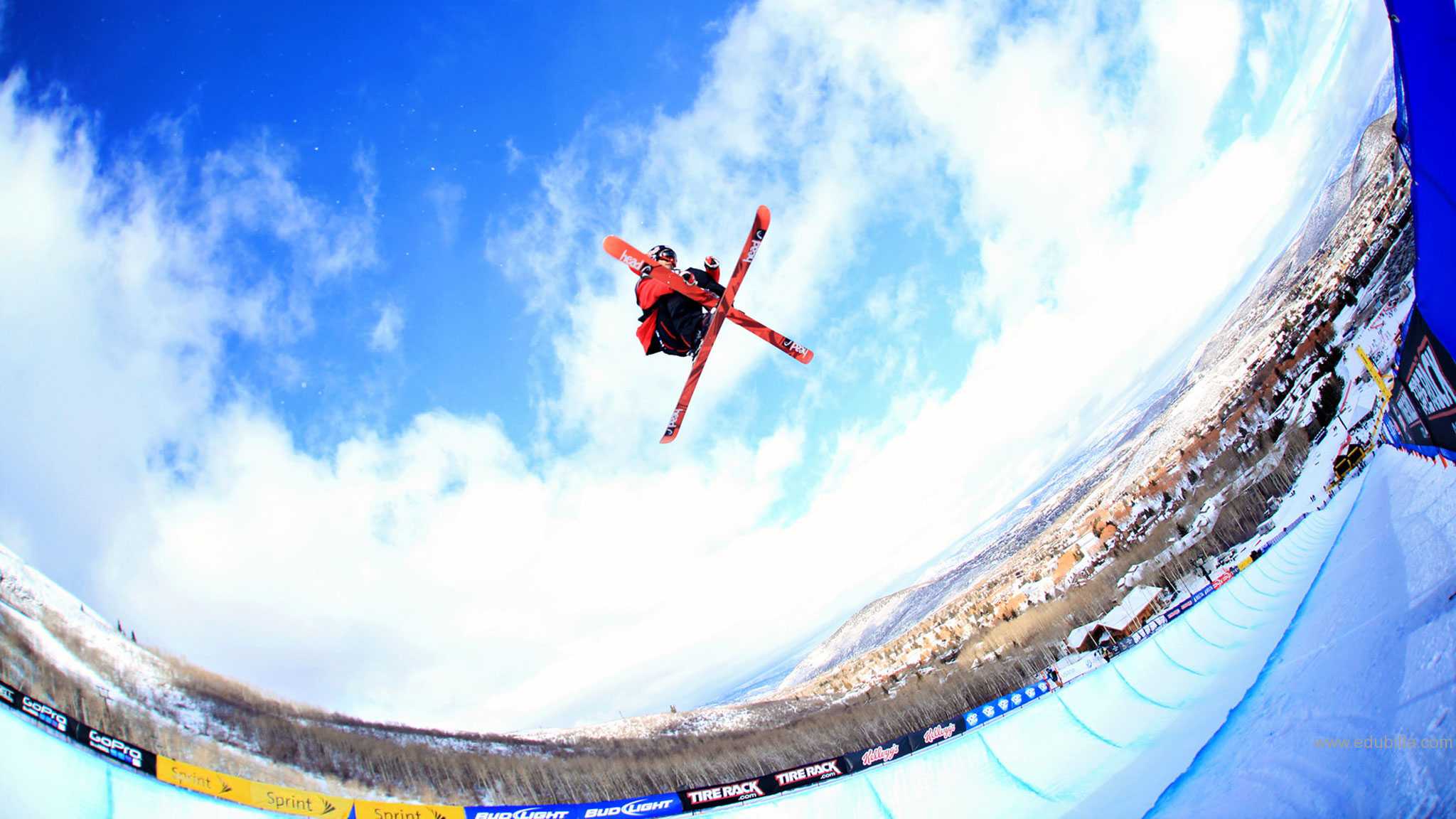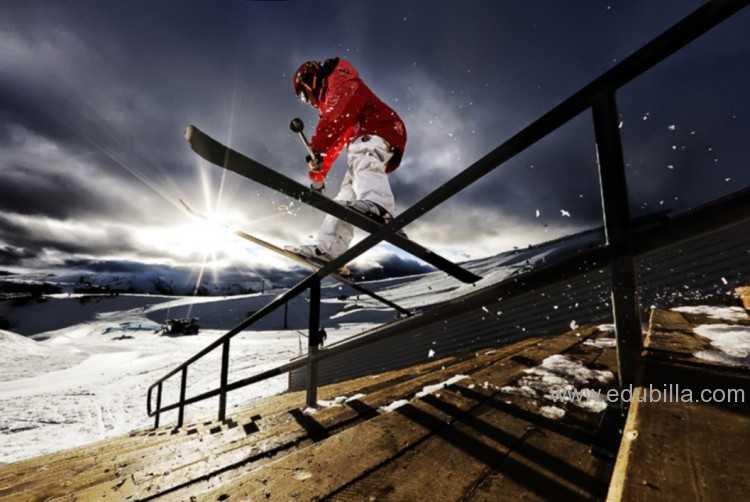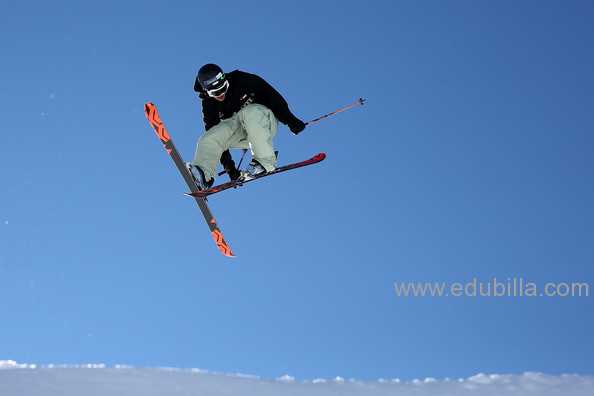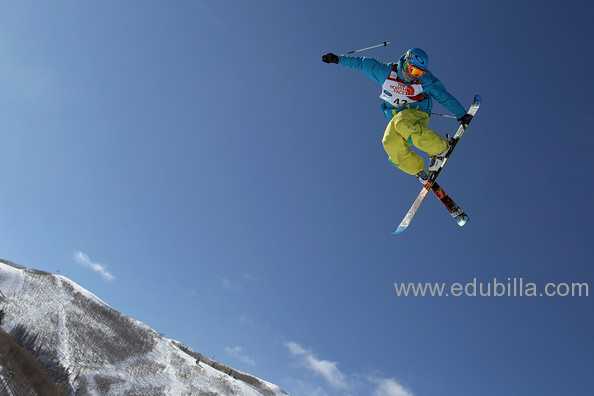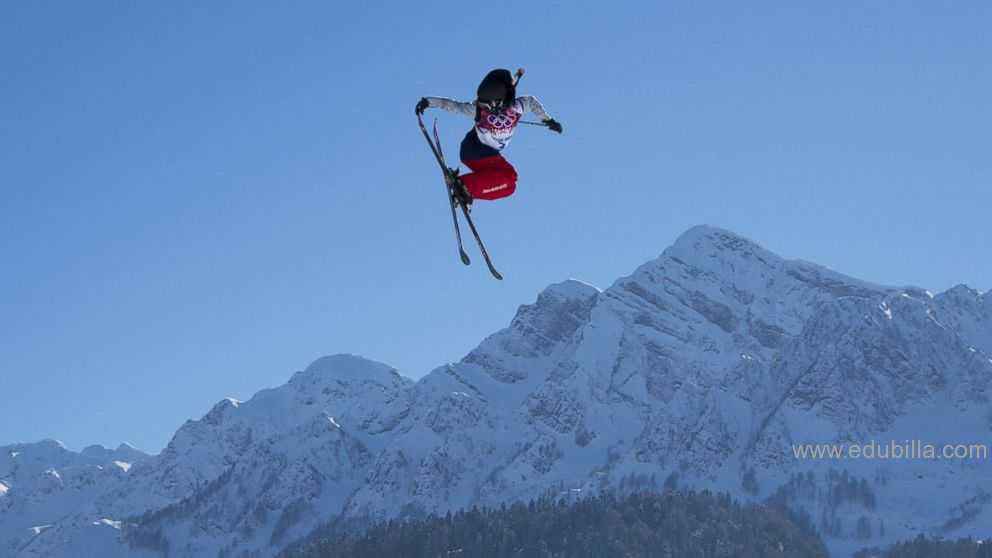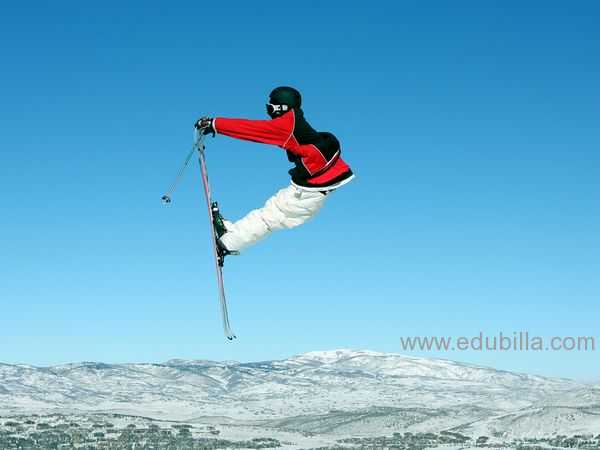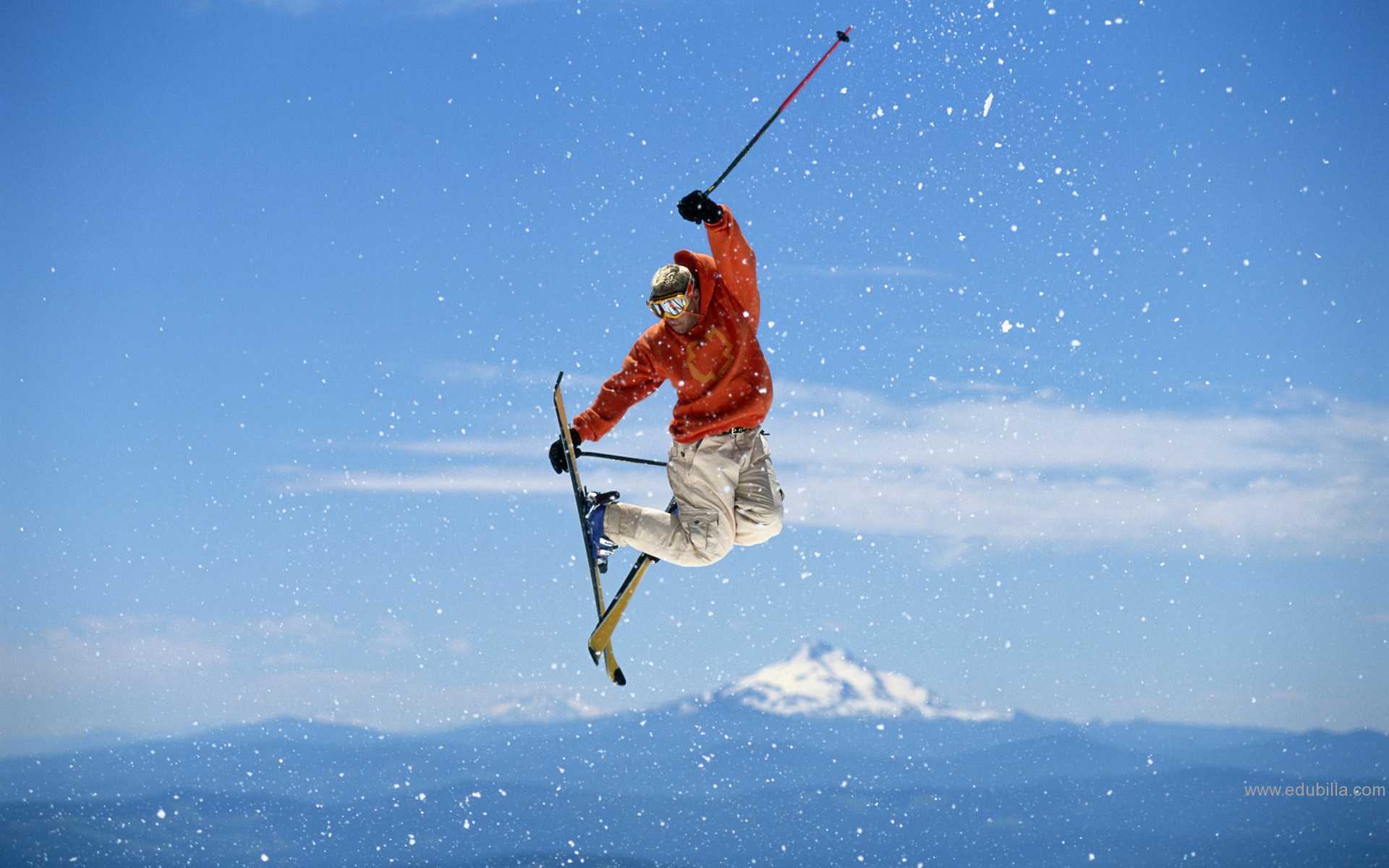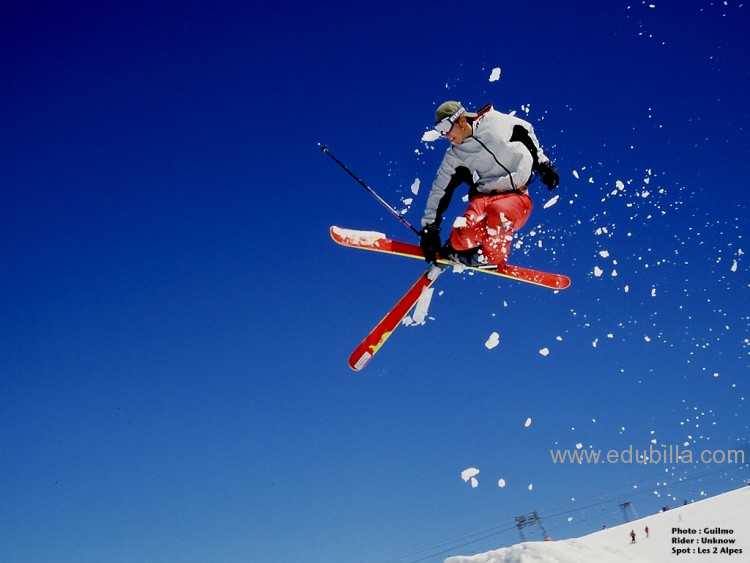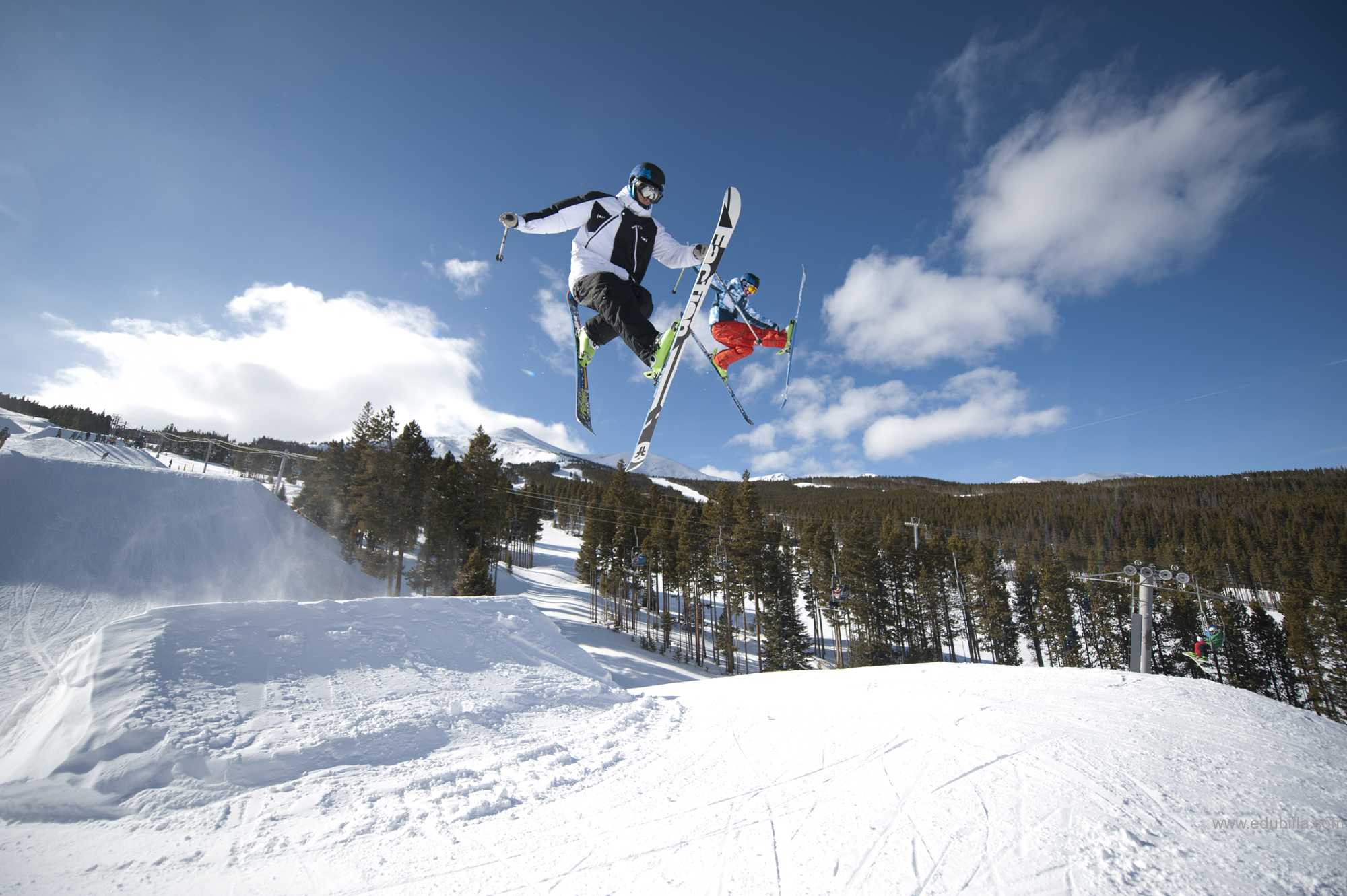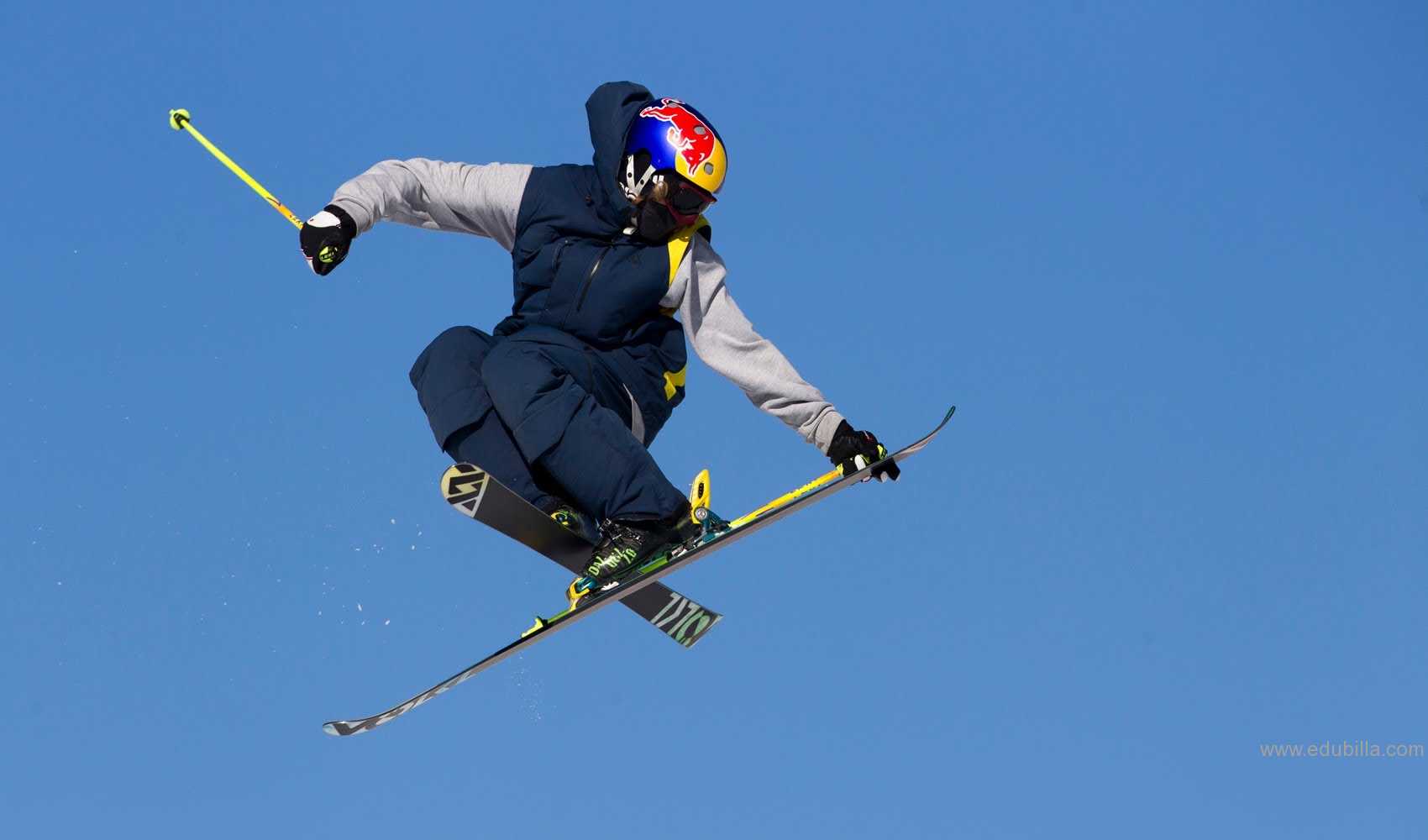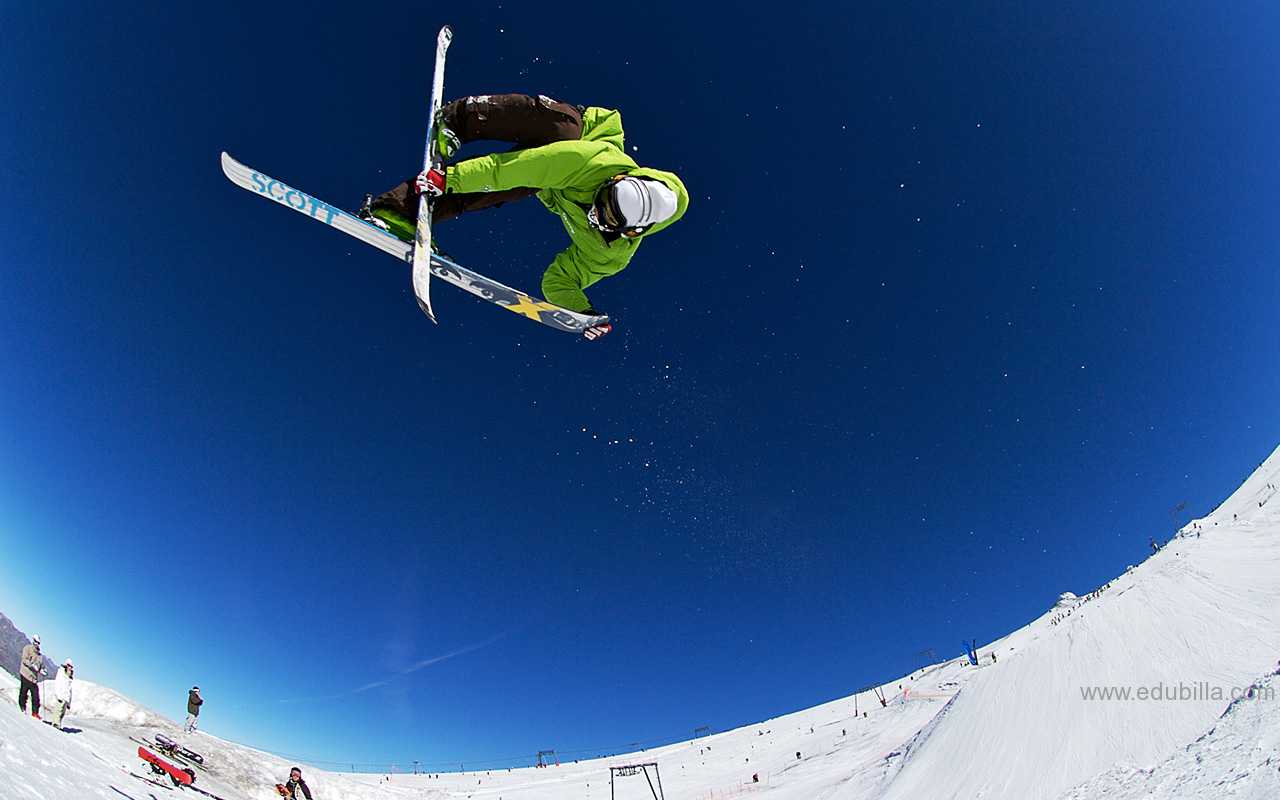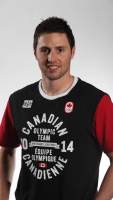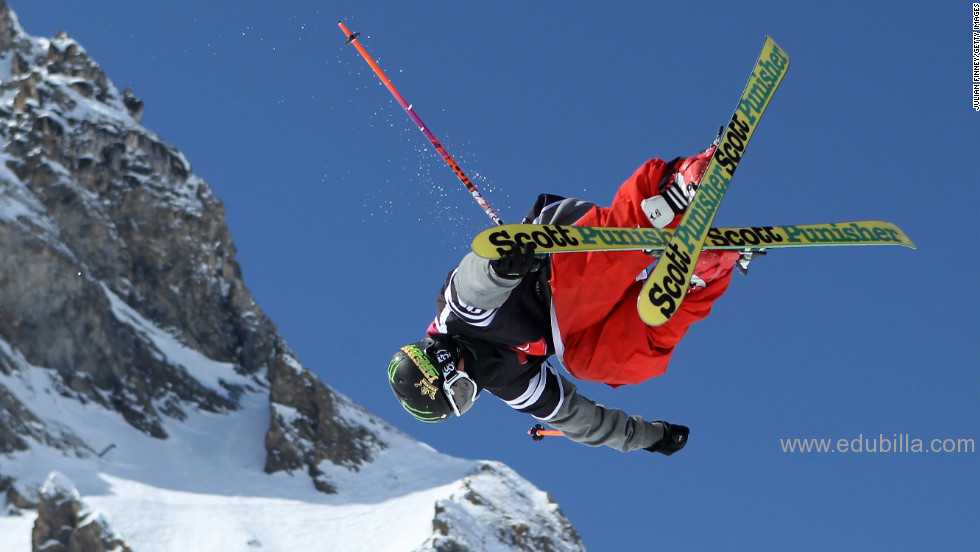
Overview Of Freestyle skiing
Freestyle skiing is a skiing discipline comprising aerials, moguls, cross, half-pipe and slopestyle as part of the winter olympics. It can consist of a skier performing aerial flips and spins, and can include skiers sliding rails and boxes on their skis. It is also commonly referred to as freeskiing, jibbing, as well as many other names around the world.
Forms of freestyle skiing:
Aerial skiing:
Aerial skiing is a judged sport, and competitors receive a score based on jump takeoff (20%), jump form (50%) and landing (30%). A degree of difficulty (DD) is then factored in for a total score. Skiers are judged on a cumulative score of two jumps. These scores do not generally carry over to the next round.
Mogul skiing:
Moguls are a series of bumps on a trail formed when skiers push the snow into mounds or piles as they execute short-radius turns.
Ski ballet:
Ski ballet (later renamed acroski) was a competitive discipline until the International Ski Federation ceased all formal competition of this event after 2000.
Ski cross:
Ski cross is based on the snowboarding boardercross. Despite it being a timed racing event, it is often considered part of freestyle skiing because it incorporates terrain features traditionally found in freestyle.
Half-pipe skiing
Slopestyle
Game Rules
- Competitors go one at a time using short skis and poles
- Head and chest should face the finish line at all times while their hips and legs turn
- Skiers wear colored knee patches to help the judges score
- Time, Turns, Style and Air determine the winner
- The setup of the course has some specific rules as well.
- An Olympic moguls course is usually about 250 meters or almost the length of three football fields
- Skiers are traveling 15 to 20 feet per second
- The moguls course is separated by 2 jumps or kickers that are roughly 2-feet high
- Competitors perform tricks to accumulate more points.
- Seven judges decide the winner...two judges watch the height of the air that's 25 percent of the score ... the other five judges evaluate the turns that's half of the total score...there is also points given for speed
Equipments Need For Freestyle skiing
Skis:
Skis can be any length. For mogul skiing, the average length is 185cm for men and 175cm for women. For aerials, the standard ski length is 160cm The skis have a narrow width with slight side cut.
Ski poles:
Used to aid the skier in accelerating, turning and maintaining balance.
Ski wear:
In moguls the turning control is essential; the colour of the knee pad is often different from that of the ski suit. This draws the judge's attention to the skier's expertise.
Boots:
Boots are standard ski boots, able to withstand the force of the landing.
Helmet:
Made of hard plastic and used to protect the head and prevent potential head injuries in both aerials and moguls.
History Of Freestyle skiing
Freestyle skiing that demands good physical training, athletic skills, artistry and technical perfection is the most creative Skiing of all. Freestyle aerials, trickskiing and hot dogging are almost as old as regular skiing, which , by the way, accounts for almost 5000 years.
First Slalom Competition:
On the brink of a new century even before the first slalom competition was held in Austria on March, 19, 1905, began the development of Freestyle skiing, but in the USA, as many might think, but in the Alpine countries. Norwegian gymnast Matthias Zdarsky, who not only founded the technique for downhill, but also developed a first ski binding for mountain skiing, was the first to impress his villagers with unusual turns spins and twists on skis.
After world war:
After world war the second many Europeans tried to revive Freestyle in the USA. The majority of the most prominent freestylers used to be Alpine skiing instructors, but starting from 1950s’ their shows of artistic abilities with skis attracted attention of many Americans, thus leading to the revival of freestyle. First performances caused interest with Mass media and Advertizing. Many Americans competed in the artistic sport. But soon freestyle skiers came to a conclusion that strong and serious sports cannot be based simply on spectacular shows and performances. That is when they started working out special rules and requirements. First rules developed laid special emphasis on the athletic training. Performers now became trained athletes. At the time first competitions were organized which also led to the development of rules for competitions and their participants.
First official competitions:
First official Freestyle competitions were organized in 1971 and they consisted of three disciplines: ballet, moguls and aerials. Ever since then only qualified athletes were allowed to participate. First Europa Cup was held in Germany in 1973 and this competition benchmarks the development of European freestyle skiing. In the years 1974-1975 there were more than 20 international freestyle competitions held in Alpine countries. In 1978 Freestyle became an official FIS discipline. FIS Freestyle World Cup was founded in 1981.
First official World Championship:
The first official World Championship was held in France in 1986. The performance of the athletes had a major impact on the IOC. The delegates were so impressed that they allowed Freestyle to be part of the Olympics’88 in Calgary (Canada) as a demonstration sports. Freestyle had huge success at the Olympics in Canada – it attracted many viewers and got extensive coverage. Soon after the Olympics IOC licensed one Freestyle discipline (moguls) and granted it the Olympic status.
Origin Of Freestyle skiing
Freestyle skiing combines speed, showmanship and the ability to perform aerial manoeuvres whilst skiing. It debuted as a demonstration sport at the 1988 Calgary Games.
Hotdogging:
There are records of people performing somersaults on skis at the beginning of the 20th century in Norway, Italy and Austria, and in the early 1920s, US skiers started to flip and spin. Freestyle skiing really began to take off in America during the 1960s when social change and freedom of expression together with the advances in ski equipment led to development of new and exciting skiing techniques. Freestyle skiing was affectionately known as ‘hotdogging’. The name seemed to perfectly capture the breathtaking mix of acrobatic tricks, jumps and sheer adrenalin rush of the sport.
Getting recognition:
Freestyle was recognised as a discipline by the International Ski Federation (FIS) in 1979. The governing body brought in new regulations in an effort to curb some of the more dangerous elements of the infant sport and the first FIS World Cup series was staged the following year.
Olympic evolution:
Freestyle skiing was contested as a demonstration sport at the 1988 Calgary Games. There were events for both men and women in all three events – moguls, aerials and ballet. Four years later, the mogul event gained medal status at the Albertville Games, as did the aerial event at Lillehammer in 1994. Ski cross will make its Olympic debut at the 2010 Vancouver Games.
Governing Bodies
International Ski Federation(FIS):
International Ski Federation is the world highest governing body for international skiing and snowboarding founded in 1924.
It is responsible for the Olympic disciplines of Alpine skiing, Cross-Country skiing, Ski Jumping, Nordic Combined, Freestyle skiing and Snowboarding including setting the international competition rules. The organization now has a membership of 118 national ski associations and is based in Oberhofen am Thunersee, Switzerland.
Ski disciplines:
The federation organises the following ski sport disciplines, for which it oversees World Cup competitions and World Championships:
-Alpine skiing
-Snowboarding
-Nordic skiing
-Freestyle skiing
Structure:
The FIS organisational structure has been developed to maximize the ability for FIS to meet its goals as the international governing body for skiing and snowboarding.
The FIS Congress (or General Assembly) elects the 17 member Council (Executive Board) every two years that oversees activities between Congresses. In order to advise the Council, it nominates members to specialist Technical Committees, sub-committees and working groups that serve as advisory bodies.
The following diagram depicts the organisational structure of FIS:

To Visit FIS Click Here
Awards Related To Freestyle skiing
CFSA Athlete Performance Awards:
Female High Performance Rookie of the Year Award
Male High Performance Rookie of the Year Award
U.S. SKI & SNOWBOARD ASSOCATION AWARDS:
USSA Diamond Award
USSA Gold Awards
USSA Silver Awards
USSA Athlete of the Year Awards
USSA Coach of the Year Awards
USSA Club of the Year Awards
USSA Chairman’s Special Recognition Awards
Chill Factore Ski Resort Awards
World Snow Awards
Sample Documents Of Freestyle skiing
-Muhammad Ali

